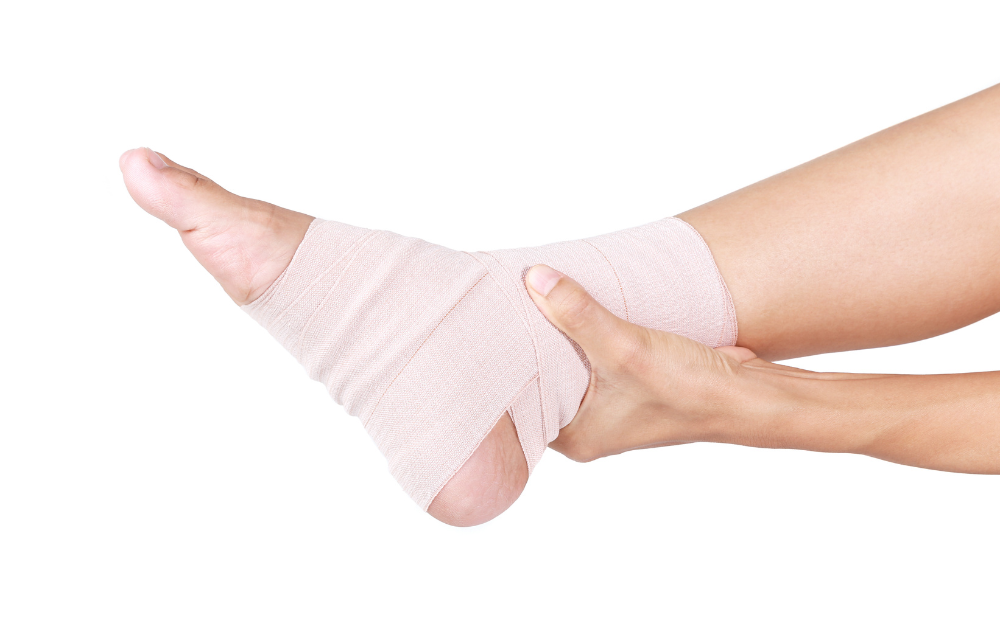Contents
Potential causes of ankle pain
Tendons connect muscles to the bone and help maintain stability and strength. Muscles work to support the ankle’s function and ability to move. Ligaments connect the bones to each other. Injuries and conditions of the ankle often include:
- Sprain — A sprain occurs when the foot rolls and causes the ankle to twist toward the ground, causing stretches or rips in the ligaments. Ankle swelling and bruises typically last for seven to 14 days. However, an ankle sprain can take months to fully heal.
- Arthritis — Osteoarthritis is wear and tear of the cartilage, resulting in pain, stiffness and a decreased range of motion, which can cause difficulty walking. There is no cure for osteoarthritis, but there are treatments that can help with the pain.
- Gout — Gout is caused by the buildup of uric acid, which causes crystal deposits to form in the joint. This acid buildup causes pain.
- Sciatica — Sciatica refers to pain in the sciatic nerve, which runs from the lower back down into the legs. It is caused by the nerve being compressed or pinched.
The most common ankle pain is due to ligament sprains. Physical therapy exercises may help with any ankle pain you are experiencing.
Why do physical therapy exercises for ankle pain?
If you are dealing with ankle stiffness or pain, physical therapy exercises and stretches may help. Taking time each day to complete the exercises at home or in physical therapy appointments may help improve your strength and flexibility, help ease your pain, and help improve your range of motion. Some examples of physical therapy exercises that can help your ankle pain include:
- Ankle circles — Performing ankle circles may help with your range of motion. This exercise can be done from a seated or lying position, making circles in both directions. It is best if you do 10 circles in each direction with the affected ankle.
- Achilles stretch — The Achilles stretch is similar to a calf stretch. Placing your hands on a wall at eye level, place one leg behind the other, keeping your heels on the floor. Gently bend your knee until you feel a light stretch in your back leg, and hold for 15 to 30 seconds. Repeat this stretch several times per leg.
- Towel stretch — For the towel stretch, sit with your legs extended in front of you and wrap a towel around the toes of both feet; then pull back gently until you feel a light stretch at the bottom of your feet and lower back legs. Hold this position for 30 seconds and repeat three times.
- Non-standing, non-weight-bearing dorsiflexion — Done sitting on the floor, this stretch uses the motion of bending the ankle up toward your shin. It can help improve your ability to walk normally. You will move your ankle by pointing your toes back toward your nose. You will want to complete three sets of 10 of this stretch.
- Non-weight-bearing plantar flexion — Also done sitting on the floor, this stretch moves your foot in the opposite direction as the dorsiflexion. You will point your foot down and away from you, which can help improve your range of motion. To best complete this stretch, keep your knee straight and move so that you’re pointing your toes down and forward. You will want to complete three sets of 10 for this stretch.
Lattimore PT is ready to help your ankle pain
We are confident our Lattimore PT team of expert physical therapists can provide you with the best care to help you find relief from your ankle pain. Our highly trained physical therapists will walk you through a customized treatment of exercises for your ankle, designed to have you up and going with less pain in no time.
Contact our team today for more information or to schedule an initial appointment.



